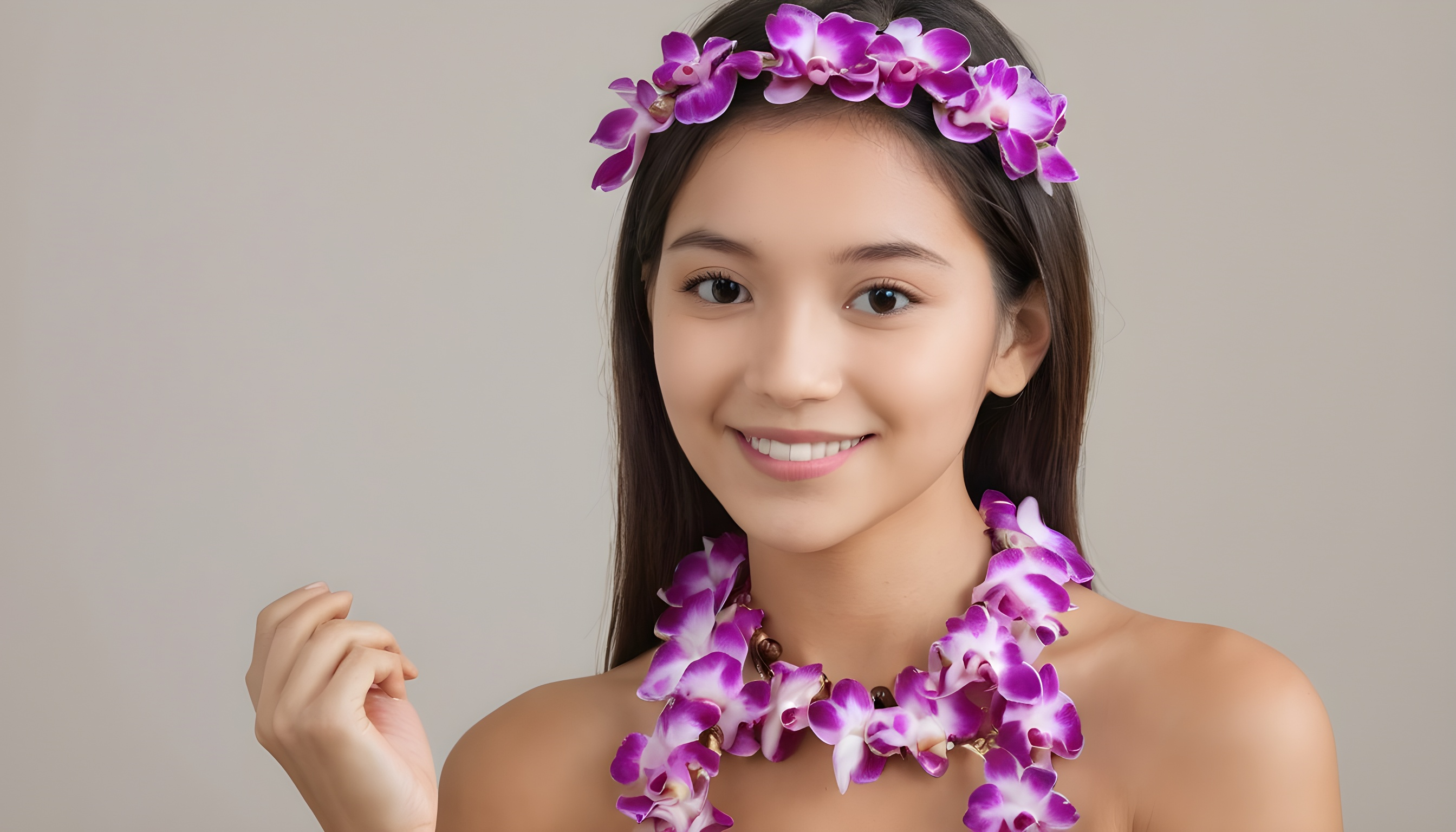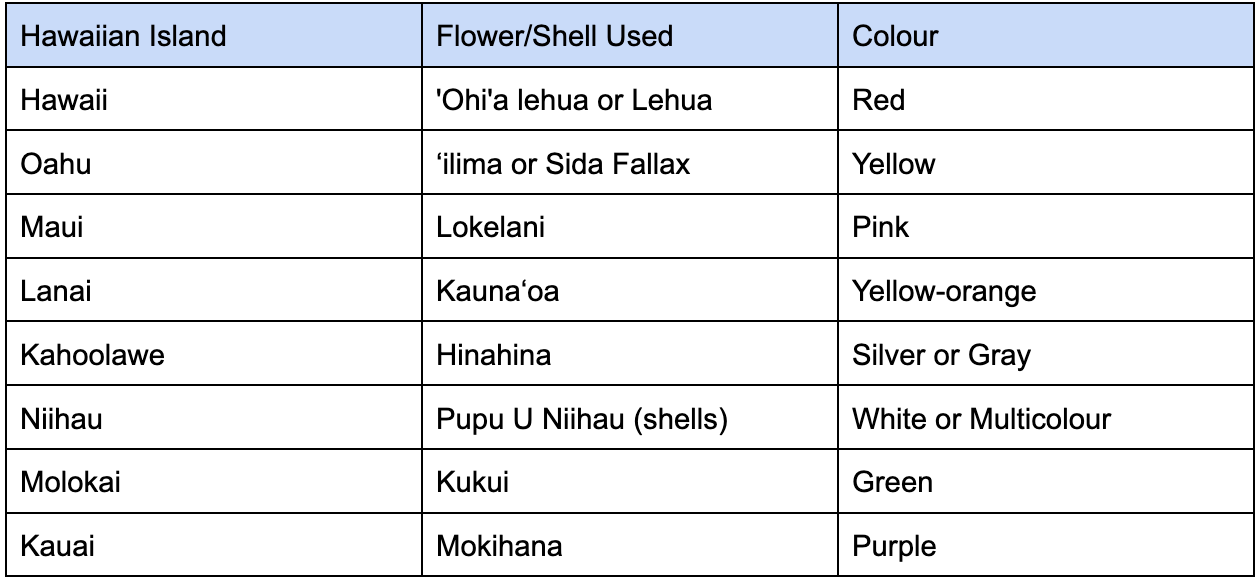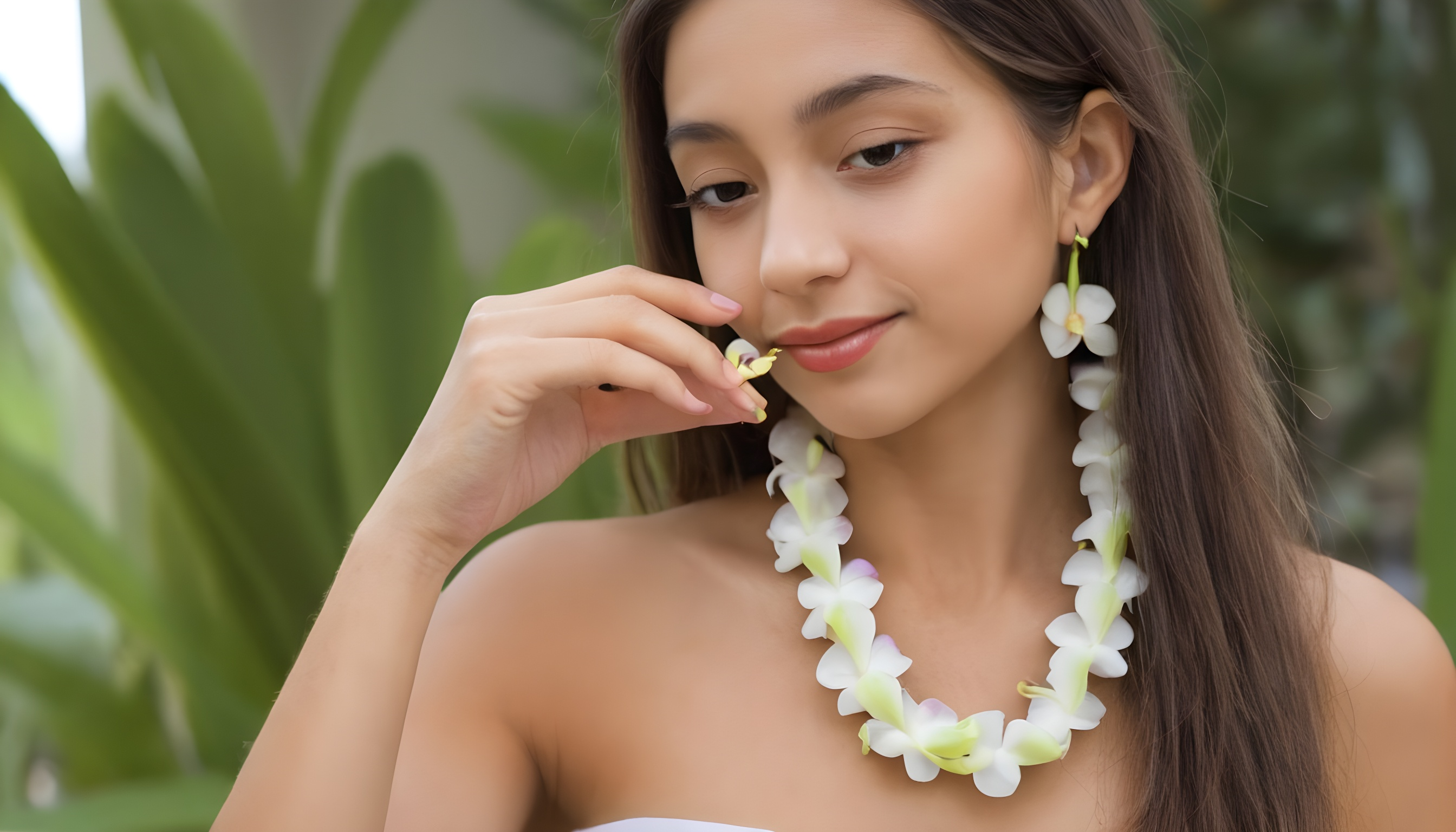Lei necklace, though, needs no introduction; still, you will be a bit confused if you don’t know what it is.
Remember seeing guests being welcomed with colorful flower garlands while on their visit to Hawaii? Or hula dancers wearing those flower garlands during their performance? And how can we forget to mention the famous Disney movie Moana, where the characters wore necklaces made with shells and flowers?
That’s what a Lei necklace is!
Lei necklaces are made with vibrant and fragrant blossoms or shells strung together. Their unique beauty has truly made them synonymous with the beauty and warmth of tropical paradises.
This also acts as an iconic symbol of hospitality and celebration that also has a rich and fascinating history spanning various cultures and centuries.
Here, we will delve into the origins and evolution of Lei necklaces, tracing their journey from ancient traditions to contemporary expressions of cultural identity.
Historical Background

Leis plays an even more important role in Hawaiian culture than you think. Tracing back the history of these necklaces, these were first introduced by ancient Polynesia, where they were an integral part of the islanders’ culture.
Long ago, Polynesians and some Asians wore Hawaiian Leis as a tradition. The leis are connected to the Native Hawaiians’ religion and the hula tradition.
Early Hawaiians, for example, made Lei using natural materials such as flowers, leaves, feathers, and shells. These symbolic adornments served various purposes, including religious rituals, social status representation, and expressions of love and affection.
The word “lei” itself comes from the Hawaiian language, meaning “garland” or “wreath.” Lei was not only worn but also offered as gifts during important ceremonies or while greeting others with respect, signifying goodwill.
The choice of materials for Lei often held cultural significance; for instance, the maile lei, made from fragrant maile leaves, was considered sacred and reserved for special occasions.
It was the Polynesian Native Hawaiians who came to the Hawaiian islands and started the tradition of making and wearing leis. They used this garland to show their respect for each other and also their gods.
Every year on May 1st, Lei Day is celebrated to honor the art of making leis and the tradition that comes with it.
What Are The Occasions They Can Be Used In?
Lei necklaces still hold a deep cultural significance in the Pacific islands. It represents love, respect, and the spirit of aloha.
By now, you know that these leis are not just an ornament or a decoration element, it is a lifestyle for the dwellers on the islands.
Lei necklaces are made with different materials and for different occasions. You might also have seen hula dancers wearing these or those performing Luaus. For example, the maile lei is often worn during weddings, while the plumeria lei is a common choice for graduation.

There are fragrant Lei, silk artificial lei, orchid lei, kukui nut & shell lei, and traditional Lei. Each material is used for different occasions such as weddings, graduations, funerals, corporate & big events, baby showers, and more.
Lei exchange is a cherished tradition during celebrations, welcoming visitors, or bidding farewell to loved ones.
Different Culture Associated With Lei
Leis are not exclusive to Hawaiian culture; they have variations and significance in various other cultures as well. Leis are found in many cultures around the world, each with its unique styles, materials, and cultural significance. They often symbolize hospitality, affection, celebration, and respect.

Hawaii
Leis are very popular in Hawaii. People give and receive flower leis on special occasions like birthdays, graduations, weddings, funerals, retirement parties, and bridal showers. It’s also very common to see graduate students wearing so many leis that usually cover them on their special day.
All the major islands in Hawaii celebrate Lei Day, and each island is represented by a specific type of Lei and a distinctive color in the festivities.
While most leis are made with orchid flowers, every island in Hawaii represents itself with different colors of flowers and materials. These are as follows:

Fun fact: Honolulu set a record for the World’s Longest Lei. Unofficially, it measured an impressive 5,336 feet (1,626 m).
Polynesian
In Polynesian cultures, a lei is a special piece made by someone, used to decorate something or give it to someone else as a way to express emotions like affection.
People give these for various reasons, such as greetings, farewells, expressing love, showing friendship, appreciation, congratulations, recognition, or just to make someone stand out.
Every Polynesian region makes leis differently with various materials. These are also called by different names; like in Samoa, similar garlands are made of flowers, buds, seeds, nuts, plant fibers, leaves, ferns, seashells, or flower petals are called “asoa” or “ula.” In Tahiti, they’re called “hei,” and in the Cook Islands, they’re known as an “ei.”
When To Wear Lei?

While we’ve already mentioned a few occasions, there isn’t really any particular time to wear these. You can wear them anytime and anywhere.
It’s completely okay for someone to purchase or make a lei for themselves in Hawaii. Locals often keep a nut, seed, or shell lei to wear on special occasions, and hats are sometimes decorated with flower, fern, or feather leis.
However, if you are a beginner wearing a lei, there are some pointers you need to keep in mind:
Leis are a gesture of affection, so always accept them even if you don’t want to keep them with you.
Drape it over your shoulders so it hangs in the back and the front.
Don’t take it off in front of the person who offered it to you, as it may be very disrespectful.
If at any time you want to remove Lei, do it discreetly.
FAQs
Are Lei necklaces exclusive to Hawaii?
No, Lei necklaces have variations and significance in various cultures worldwide. They symbolize hospitality, affection, celebration, and respect.
What does the word “lei” mean?
The word “lei” comes from the Hawaiian language, meaning “garland” or “wreath.”
Can I buy a lei necklace, and how much can I expect to spend on it?
Yes! You can definitely buy these necklaces. You can find these necklaces on sale on a site that offers Lei. Price of these necklaces isn’t fixed as it depends on the material used and the occasion you’ll wear them. Once you find the perfect piece, you can easily order it and get it delivered to your address.
Celebrating Occasions With The Tropical Feel!
The history of lei necklaces is an interesting one. Its journey through time reflects the resilience and adaptability of Pacific island cultures. From ancient rituals to contemporary celebrations, Lei have evolved, incorporating diverse materials and styles while retaining their core symbolism of love, respect, and hospitality. As these iconic necklaces continue to enchant people worldwide, they also serve as a tangible link to the rich cultural heritage and vibrant traditions of the Pacific islands.
